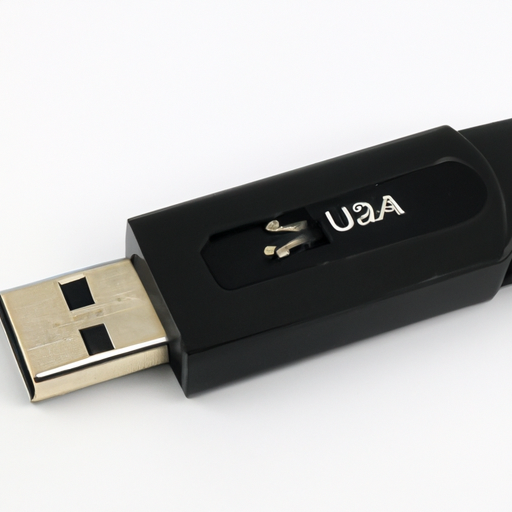
The purchase price of the latest USB interface can vary depending on the brand, features, and specifications. As of now, the latest USB interfaces on the market range from $50 to $500 or more. These devices are essential for connecting various peripherals to your computer, such as external hard drives, printers, cameras, and more.USB interfaces have evolved over the years, with the latest models offering faster data transfer speeds, improved connectivity options, and enhanced compatibility with different devices. They come in various shapes and sizes, from compact dongles to larger hubs with multiple ports.One of the key features of the latest USB interfaces is the USB 3.0 technology, which offers faster data transfer speeds compared to the older USB 2.0 standard. With USB 3.0, you can transfer large files quickly and efficiently, making it ideal for tasks such as backing up data, transferring photos and videos, and more.Another important feature of the latest USB interfaces is the Type-C connector, which is reversible and can be plugged in either way. This makes it more convenient to use and eliminates the frustration of trying to figure out the correct orientation when plugging in a device.In addition to faster data transfer speeds and improved connectivity options, the latest USB interfaces also offer enhanced power delivery capabilities. This means that you can charge your devices faster and more efficiently using a USB interface, eliminating the need for multiple chargers and cables.Some of the latest USB interfaces also come with additional features such as built-in card readers, audio interfaces, and Ethernet ports, making them versatile and multifunctional devices. These extra features can be useful for professionals who need to connect multiple devices to their computer or for individuals who want to streamline their workspace.When choosing a USB interface, it is important to consider your specific needs and requirements. If you need to connect multiple devices to your computer, a USB hub with multiple ports may be the best option. If you need faster data transfer speeds, look for a USB interface with USB 3.0 technology. And if you want a versatile device that can handle various tasks, consider a USB interface with additional features such as card readers or audio interfaces.In conclusion, the purchase price of the latest USB interface can vary depending on the brand, features, and specifications. These devices are essential for connecting various peripherals to your computer and offer faster data transfer speeds, improved connectivity options, and enhanced power delivery capabilities. When choosing a USB interface, consider your specific needs and requirements to find the best device for your setup.

In the world of technology, interfaces play a crucial role in enabling users to interact with various devices and systems. An interface serves as a bridge between the user and the technology, allowing for seamless communication and control. There are several popular models of interfaces that have been developed over the years, each with its own unique features and capabilities. In this article, we will explore some of the most popular models of interfaces and discuss their key characteristics.1. Graphical User Interface (GUI)One of the most widely used models of interface is the Graphical User Interface (GUI). A GUI allows users to interact with a computer or device using graphical elements such as icons, buttons, and menus. This type of interface is intuitive and user-friendly, making it easy for even novice users to navigate and control the system.GUIs are commonly found in operating systems such as Windows, macOS, and Linux, as well as in software applications and websites. Users can interact with a GUI by using a mouse, keyboard, or touch screen to click on icons, drag and drop files, and input text. GUIs also often include features such as windows, dialog boxes, and toolbars to help users perform tasks more efficiently.2. Command Line Interface (CLI)Another popular model of interface is the Command Line Interface (CLI). In a CLI, users interact with a computer or device by typing commands into a text-based interface. This type of interface is commonly used by developers, system administrators, and power users who prefer the flexibility and control that a CLI provides.CLI interfaces are typically found in operating systems such as Unix, Linux, and macOS, as well as in programming languages and development tools. Users can enter commands to perform tasks such as navigating the file system, running programs, and managing system settings. CLI interfaces are powerful and efficient, but they can be intimidating for users who are not familiar with command-line syntax.3. Touchscreen InterfaceWith the rise of smartphones and tablets, touchscreen interfaces have become increasingly popular in recent years. A touchscreen interface allows users to interact with a device by touching the screen with their fingers or a stylus. This type of interface is intuitive and responsive, making it ideal for mobile devices and kiosks.Touchscreen interfaces are commonly found in smartphones, tablets, and interactive displays. Users can perform tasks such as swiping, tapping, and pinching to navigate menus, scroll through content, and interact with apps. Touchscreen interfaces also often support gestures such as multi-touch and long-press to enable more advanced interactions.4. Voice User Interface (VUI)Voice User Interfaces (VUIs) are another popular model of interface that allows users to interact with a device using spoken commands. VUIs use speech recognition technology to interpret and respond to user input, enabling hands-free control of devices and systems.VUIs are commonly found in virtual assistants such as Amazon Alexa, Google Assistant, and Apple Siri, as well as in smart home devices and automotive systems. Users can ask questions, give commands, and control devices using natural language, making VUIs convenient and accessible for users of all ages and abilities. VUIs are also evolving to support more complex interactions such as multi-turn conversations and personalized responses.5. Virtual Reality InterfaceVirtual Reality (VR) interfaces are a cutting-edge model of interface that immerses users in a virtual environment using headsets and motion controllers. VR interfaces enable users to interact with digital content and simulations in a three-dimensional space, creating a sense of presence and immersion.VR interfaces are commonly used in gaming, training, and simulation applications, as well as in virtual meetings and collaboration tools. Users can move, gesture, and interact with objects in the virtual world using hand controllers and body tracking. VR interfaces offer a new level of engagement and interactivity, but they require specialized hardware and software to operate.6. Augmented Reality InterfaceAugmented Reality (AR) interfaces are a hybrid model of interface that overlays digital content onto the real world using smartphones, tablets, and smart glasses. AR interfaces blend virtual elements with the user's physical environment, enhancing the user's perception and interaction with the world around them.AR interfaces are commonly used in mobile apps, games, and marketing campaigns, as well as in industrial and medical applications. Users can view and interact with virtual objects, information, and animations overlaid on top of their surroundings. AR interfaces offer a unique and immersive user experience, but they require precise tracking and calibration to align virtual content with the real world.In conclusion, interfaces play a critical role in enabling users to interact with technology and systems in a meaningful way. There are several popular models of interfaces, each with its own unique features and capabilities. Whether it's a Graphical User Interface, Command Line Interface, Touchscreen Interface, Voice User Interface, Virtual Reality Interface, or Augmented Reality Interface, users have a variety of options to choose from based on their preferences and needs. As technology continues to evolve, interfaces will continue to adapt and innovate to provide users with more intuitive, immersive, and engaging experiences.

The new RS485 interface definition is set to be released in the near future, with industry experts predicting a launch date within the next few months. This highly anticipated update to the RS485 standard is expected to bring significant improvements and enhancements to the popular communication protocol, making it even more versatile and reliable for a wide range of applications.RS485 is a widely used standard for serial communication in industrial automation, building automation, and other applications that require robust and reliable data transmission over long distances. The protocol is known for its high noise immunity, multi-point capabilities, and long-distance communication capabilities, making it a popular choice for many different types of systems.The upcoming release of the new RS485 interface definition is expected to build upon the strengths of the existing standard while addressing some of the limitations and challenges that users have encountered in the past. One of the key areas of focus for the new definition is expected to be improved interoperability and compatibility with other communication protocols, making it easier for RS485 devices to communicate with devices using different standards.In addition to improved interoperability, the new RS485 interface definition is also expected to include enhancements to data transfer speeds, error detection and correction mechanisms, and power efficiency. These improvements will help to make RS485 even more versatile and reliable for a wide range of applications, from simple point-to-point communication to complex multi-node networks.One of the most anticipated features of the new RS485 interface definition is expected to be support for higher data transfer speeds. While the existing standard is capable of speeds up to 10 Mbps, the new definition is expected to push this limit even further, potentially enabling data rates of up to 100 Mbps or more. This will open up new possibilities for RS485 in applications that require high-speed data transfer, such as video surveillance systems, high-speed data acquisition systems, and more.Another key area of improvement in the new RS485 interface definition is expected to be enhanced error detection and correction mechanisms. The existing standard includes basic error checking mechanisms, but the new definition is expected to include more advanced error detection and correction algorithms that can help to ensure data integrity and reliability in even the most challenging environments.Power efficiency is also expected to be a focus of the new RS485 interface definition, with enhancements to the protocol that will help to reduce power consumption and extend the battery life of RS485 devices. This will be particularly important for applications that require low-power operation, such as wireless sensor networks and battery-powered devices.Overall, the upcoming release of the new RS485 interface definition is expected to bring significant improvements and enhancements to this popular communication protocol. With improved interoperability, higher data transfer speeds, enhanced error detection and correction mechanisms, and increased power efficiency, RS485 is set to become even more versatile and reliable for a wide range of applications.In conclusion, the new RS485 interface definition is set to be released in the near future, with industry experts predicting a launch date within the next few months. This highly anticipated update to the RS485 standard is expected to bring significant improvements and enhancements to the protocol, making it even more versatile and reliable for a wide range of applications. With improved interoperability, higher data transfer speeds, enhanced error detection and correction mechanisms, and increased power efficiency, RS485 is poised to remain a popular choice for serial communication in industrial automation, building automation, and other applications for years to come.
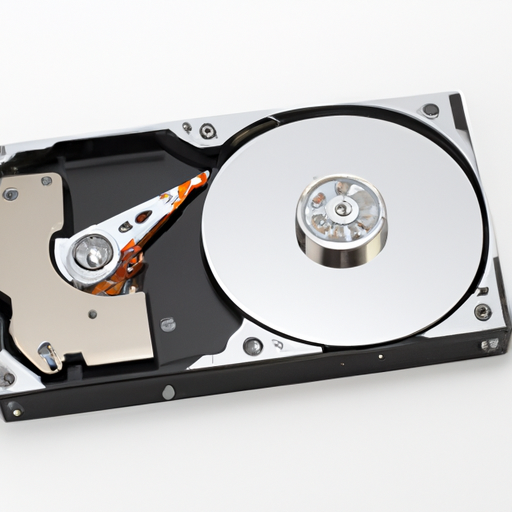
Solid-state drives (SSDs) have become increasingly popular in recent years due to their faster speeds and improved reliability compared to traditional hard disk drives (HDDs). One of the key components of an SSD is its interface, which plays a crucial role in determining how the drive communicates with the rest of the computer system. In this article, we will explore the interface of solid-state hard drives and discuss its various aspects in detail.The interface of an SSD serves as the connection point between the drive and the computer system, allowing data to be transferred back and forth between the two. There are several different types of interfaces that are commonly used in SSDs, each with its own set of features and capabilities. Some of the most popular interfaces include SATA, PCIe, and NVMe.SATA, which stands for Serial Advanced Technology Attachment, is one of the most widely used interfaces for SSDs. It is a standard interface that has been around for many years and is commonly found in both SSDs and HDDs. SATA interfaces are typically used in consumer-grade SSDs and offer decent performance for everyday computing tasks. However, SATA interfaces are limited in terms of speed and bandwidth, which can be a bottleneck for high-performance applications.PCIe, or Peripheral Component Interconnect Express, is another common interface used in SSDs. PCIe interfaces offer significantly higher speeds and bandwidth compared to SATA interfaces, making them ideal for high-performance computing tasks such as gaming, video editing, and data analysis. PCIe interfaces are typically found in high-end SSDs and are capable of delivering blazing-fast read and write speeds.NVMe, or Non-Volatile Memory Express, is a newer interface that is specifically designed for SSDs. NVMe interfaces are built from the ground up to take advantage of the speed and performance of solid-state storage, offering even faster speeds and lower latency compared to SATA and PCIe interfaces. NVMe interfaces are commonly found in high-end SSDs and are ideal for demanding applications that require lightning-fast performance.In addition to the interface type, the physical form factor of an SSD also plays a role in determining its compatibility with different systems. Most SSDs come in a 2.5-inch form factor, which is compatible with standard drive bays in desktop computers and laptops. However, there are also smaller form factors such as M.2 and U.2, which are designed for compact systems and high-performance applications.When choosing an SSD, it is important to consider the interface type and form factor that will best suit your needs. If you are a casual user who primarily uses your computer for web browsing and office tasks, a SATA SSD with a 2.5-inch form factor may be sufficient. However, if you are a power user who requires fast speeds and high performance, you may want to opt for a PCIe or NVMe SSD with a smaller form factor.In conclusion, the interface of a solid-state hard drive plays a crucial role in determining its performance and compatibility with different systems. SATA, PCIe, and NVMe are some of the most common interfaces used in SSDs, each offering different levels of speed and performance. When choosing an SSD, it is important to consider the interface type and form factor that will best suit your needs and ensure optimal performance for your computing tasks.
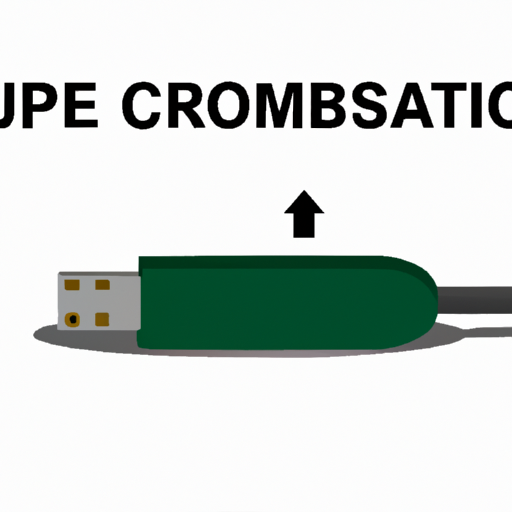
The USB interface voltage is a crucial component in electronic devices, as it provides the necessary power for the device to function properly. There are several common production processes for USB interface voltage, each with its own advantages and disadvantages. In this article, we will explore these processes in detail and discuss their applications in various industries.One of the most common production processes for USB interface voltage is the use of voltage regulators. Voltage regulators are electronic devices that maintain a constant output voltage regardless of changes in input voltage or load conditions. They are widely used in electronic devices to ensure stable and reliable power supply.There are two main types of voltage regulators: linear regulators and switching regulators. Linear regulators are simple and cost-effective, but they are less efficient than switching regulators. Switching regulators, on the other hand, are more complex and expensive, but they offer higher efficiency and better performance in terms of voltage regulation.Another common production process for USB interface voltage is the use of power management integrated circuits (PMICs). PMICs are integrated circuits that combine multiple functions, such as voltage regulation, power conversion, and battery charging, into a single chip. They are widely used in portable electronic devices, such as smartphones, tablets, and laptops, to optimize power consumption and extend battery life.PMICs are available in a wide range of configurations, from simple voltage regulators to complex power management solutions with multiple outputs and advanced features. They are highly versatile and can be customized to meet the specific requirements of different applications.In addition to voltage regulators and PMICs, another common production process for USB interface voltage is the use of DC-DC converters. DC-DC converters are electronic devices that convert one DC voltage to another DC voltage with minimal loss of power. They are widely used in electronic devices to step up or step down the voltage level as required.There are several types of DC-DC converters, including buck converters, boost converters, and buck-boost converters. Buck converters step down the input voltage to a lower output voltage, while boost converters step up the input voltage to a higher output voltage. Buck-boost converters can step up or step down the input voltage, depending on the load conditions.DC-DC converters are highly efficient and reliable, making them ideal for applications where precise voltage regulation is required. They are commonly used in power supplies, battery chargers, and voltage regulators for USB interfaces.In conclusion, there are several common production processes for USB interface voltage, including voltage regulators, PMICs, and DC-DC converters. Each of these processes has its own advantages and disadvantages, depending on the specific requirements of the application. By understanding the characteristics of each production process, manufacturers can choose the most suitable solution for their USB interface voltage needs.

The interface converter industry is a crucial component of the technology sector, providing the necessary tools to connect different devices and systems together. As technology continues to advance and evolve, the demand for interface converters has only increased, making it a thriving and competitive industry.Interface converters play a vital role in ensuring compatibility and communication between various devices, such as computers, printers, monitors, and other peripherals. They serve as the bridge between different interfaces, allowing data to be transferred seamlessly and efficiently. Without interface converters, many devices would not be able to communicate with each other, leading to a lack of interoperability and functionality.One of the key drivers of the interface converter industry is the rapid pace of technological innovation. As new devices and systems are developed, there is a constant need for interface converters that can support the latest interfaces and protocols. This has led to a wide range of interface converters being available on the market, catering to different needs and requirements.Another factor contributing to the growth of the interface converter industry is the increasing adoption of IoT (Internet of Things) devices. With more and more devices being connected to the internet, there is a greater need for interface converters that can facilitate communication between these devices. Interface converters are essential for enabling IoT devices to exchange data and work together seamlessly.The rise of Industry 4.0 and the increasing digitization of industries have also fueled the demand for interface converters. As more companies embrace automation and digital technologies, there is a growing need for interface converters that can connect legacy systems with modern digital platforms. Interface converters play a crucial role in enabling the integration of different systems and technologies, helping companies streamline their operations and improve efficiency.The interface converter industry is also benefiting from the growing popularity of USB-C, a versatile and powerful interface that is becoming increasingly common in modern devices. USB-C interface converters are in high demand, as they allow users to connect a wide range of devices, including laptops, smartphones, and tablets, using a single cable. The versatility and convenience of USB-C interface converters have made them a popular choice among consumers and businesses alike.In addition to USB-C, other interface converters, such as HDMI, DisplayPort, and Thunderbolt, are also in high demand, as they enable users to connect different devices and displays with ease. These interface converters are essential for multimedia applications, gaming, and professional use, providing high-quality audio and video transmission.The interface converter industry is highly competitive, with numerous manufacturers and suppliers vying for market share. Companies that offer innovative and reliable interface converters are able to gain a competitive edge and attract a loyal customer base. As technology continues to evolve, companies in the interface converter industry must stay ahead of the curve and develop products that meet the changing needs of consumers and businesses.Overall, the interface converter industry is in a strong position, driven by the increasing demand for connectivity and interoperability in the digital age. With the rise of IoT, Industry 4.0, and USB-C, the need for interface converters is only expected to grow in the coming years. Companies that can adapt to the changing landscape of technology and provide high-quality interface converters will be well-positioned to succeed in this dynamic and evolving industry.

When it comes to training on computer motherboard interfaces, there are several key considerations that should be taken into account in order to ensure that the training is effective and successful. In this article, we will discuss some of the most important factors to consider when designing and implementing a training program for motherboard interfaces.1. Audience Analysis: One of the first steps in designing a training program for motherboard interfaces is to conduct an audience analysis. This involves identifying the target audience for the training, including their level of technical expertise, their familiarity with computer hardware, and their specific learning needs. By understanding the audience, trainers can tailor the training program to meet the needs and expectations of the participants.2. Learning Objectives: Before designing the training program, it is important to establish clear learning objectives. These objectives should outline what participants will be able to do after completing the training, such as identifying different motherboard components, understanding how they interact with each other, and troubleshooting common issues. By clearly defining the learning objectives, trainers can ensure that the training program is focused and effective.3. Hands-On Training: When it comes to learning about motherboard interfaces, hands-on training is essential. Participants should have the opportunity to work with actual motherboards, identify different components, and practice connecting and disconnecting various interfaces. Hands-on training allows participants to apply their knowledge in a practical setting, which can help reinforce learning and improve retention.4. Interactive Learning Activities: In addition to hands-on training, interactive learning activities can also be beneficial for training on motherboard interfaces. These activities can include quizzes, group discussions, case studies, and simulations. By incorporating interactive elements into the training program, trainers can engage participants and encourage active participation in the learning process.5. Real-World Examples: To make the training program more relevant and engaging, trainers should incorporate real-world examples into the curriculum. This can include case studies of common motherboard issues, examples of different motherboard configurations, and demonstrations of how to troubleshoot problems. By using real-world examples, trainers can help participants see the practical applications of their learning and understand how motherboard interfaces are used in everyday computing.6. Ongoing Support: Training on motherboard interfaces should not end once the program is completed. To ensure that participants retain their knowledge and skills, it is important to provide ongoing support and resources. This can include access to online tutorials, troubleshooting guides, and technical support. By offering ongoing support, trainers can help participants continue to develop their expertise and stay up-to-date on the latest developments in motherboard technology.7. Evaluation and Feedback: Finally, it is important to evaluate the effectiveness of the training program and gather feedback from participants. This can be done through surveys, quizzes, and assessments. By collecting feedback, trainers can identify areas for improvement and make adjustments to future training programs. Evaluation and feedback are essential for ensuring that the training program is meeting the needs of participants and achieving its learning objectives.In conclusion, training on computer motherboard interfaces requires careful planning and consideration of the factors outlined above. By conducting an audience analysis, establishing clear learning objectives, providing hands-on training, incorporating interactive learning activities, using real-world examples, offering ongoing support, and evaluating the program, trainers can create a successful and effective training program for motherboard interfaces. By following these guidelines, participants can develop the knowledge and skills they need to work with motherboard interfaces confidently and competently.

The main application direction of a microphone interface is to capture sound and convert it into an electrical signal that can be processed and transmitted to various devices. Microphone interfaces are essential components in a wide range of audio recording and communication systems, including recording studios, live sound reinforcement systems, telecommunication devices, and computer peripherals.In recent years, the demand for high-quality audio recording and communication has increased significantly, leading to the development of advanced microphone interfaces that offer improved sound quality, flexibility, and connectivity options. These interfaces are designed to meet the needs of professional audio engineers, musicians, podcasters, content creators, and other users who require reliable and versatile audio recording solutions.One of the key features of a microphone interface is its ability to convert analog sound signals into digital data that can be processed by computers and other digital devices. This process, known as analog-to-digital conversion, is essential for capturing high-fidelity audio recordings and transmitting them over digital networks. Microphone interfaces typically use high-quality analog-to-digital converters (ADCs) to ensure accurate and detailed sound reproduction.Another important aspect of microphone interfaces is their connectivity options. Most modern interfaces offer a variety of input and output options, including XLR, TRS, and USB connections, to accommodate different types of microphones and audio devices. Some interfaces also feature built-in preamps, phantom power, and other signal processing capabilities to enhance the quality of the recorded audio.Microphone interfaces are commonly used in recording studios for capturing vocals, instruments, and other sound sources with precision and clarity. Professional audio engineers rely on high-quality interfaces to ensure that their recordings meet the highest standards of sound quality and fidelity. These interfaces are also used in live sound reinforcement systems to amplify and process sound signals for concerts, events, and other live performances.In addition to recording studios and live sound applications, microphone interfaces are widely used in telecommunication devices, such as smartphones, tablets, and laptops, for capturing voice calls, video chats, and other forms of communication. These interfaces enable users to communicate effectively over long distances and in noisy environments by capturing clear and intelligible audio signals.Microphone interfaces are also essential components in computer peripherals, such as USB microphones, webcams, and headsets, that are used for video conferencing, online gaming, and other multimedia applications. These interfaces provide users with a convenient and reliable way to capture and transmit audio signals to their computers for recording, streaming, and communication purposes.Overall, the main application direction of a microphone interface is to provide users with a versatile and reliable solution for capturing, processing, and transmitting audio signals in a wide range of recording and communication systems. Whether you are a professional audio engineer, musician, podcaster, content creator, or casual user, a high-quality microphone interface can help you achieve the best possible sound quality and performance in your audio recordings and communications.

HDMI, or High-Definition Multimedia Interface, is a widely used interface for transmitting high-quality audio and video signals between devices. It has become the standard for connecting devices such as TVs, Blu-ray players, gaming consoles, and computers to displays like monitors and projectors. In this article, we will explore what HDMI is, how it works, its benefits, and its evolution over the years.What is HDMI?HDMI is a digital interface that was first introduced in 2002 by a group of companies including Sony, Philips, Panasonic, and Toshiba. It was designed to replace the analog interfaces such as VGA, DVI, and component video, which were limited in terms of resolution and quality. HDMI is capable of transmitting uncompressed high-definition video and audio signals over a single cable, making it a convenient and efficient solution for connecting devices.How does HDMI work?HDMI uses a digital signal to transmit audio and video data between devices. The signal is transmitted in a series of 0s and 1s, which are decoded by the receiving device to display the audio and video content. HDMI cables have multiple data channels that can carry different types of data, including video, audio, and control signals. This allows for high-quality audio and video to be transmitted simultaneously over a single cable.Benefits of HDMIThere are several benefits to using HDMI for connecting devices. One of the main advantages is the high-quality audio and video that HDMI can deliver. HDMI supports resolutions up to 4K and can transmit high-definition audio formats such as Dolby TrueHD and DTS-HD Master Audio. This ensures a superior viewing and listening experience for users.Another benefit of HDMI is its convenience and ease of use. HDMI cables are simple to connect and disconnect, and they can carry both audio and video signals, eliminating the need for multiple cables. HDMI also supports features such as HDMI-CEC (Consumer Electronics Control), which allows devices to communicate with each other and be controlled with a single remote.Evolution of HDMISince its introduction in 2002, HDMI has undergone several revisions to keep up with the advancements in technology. The latest version of HDMI, HDMI 2.1, was released in 2017 and offers support for higher resolutions, refresh rates, and color depths. HDMI 2.1 can support resolutions up to 10K and refresh rates up to 120Hz, making it ideal for gaming and high-performance applications.HDMI 2.1 also introduces new features such as Dynamic HDR, which allows for dynamic metadata to be sent along with the video signal, resulting in improved picture quality. Another new feature is eARC (Enhanced Audio Return Channel), which enables high-quality audio formats to be transmitted from the TV to the AV receiver or soundbar.In conclusion, HDMI is a versatile and reliable interface for connecting audio and video devices. Its high-quality audio and video capabilities, ease of use, and support for advanced features make it the preferred choice for consumers and manufacturers alike. As technology continues to evolve, HDMI will likely continue to adapt and improve to meet the demands of the ever-changing digital landscape.

Third-party interface products are becoming increasingly popular in the tech industry, offering a range of advantages for businesses and consumers alike. These products provide a bridge between different systems and applications, allowing for seamless integration and improved functionality. In this article, we will explore the various advantages of third-party interface products and how they can benefit businesses in today's digital landscape.One of the key advantages of third-party interface products is their ability to streamline processes and improve efficiency. By connecting disparate systems and applications, these products can automate tasks and eliminate the need for manual data entry. This not only saves time and reduces the risk of errors, but also allows employees to focus on more strategic tasks that add value to the business.Another advantage of third-party interface products is their ability to enhance the user experience. By providing a seamless interface between different systems, these products can make it easier for users to access and interact with data. This can lead to increased productivity and improved decision-making, as users are able to quickly access the information they need without having to navigate multiple systems.Third-party interface products also offer scalability and flexibility, allowing businesses to easily adapt to changing needs and requirements. These products can be easily customized to meet specific business needs, and can be integrated with a wide range of systems and applications. This flexibility allows businesses to quickly respond to market changes and stay ahead of the competition.In addition to improving efficiency and user experience, third-party interface products can also help businesses save money. By automating tasks and streamlining processes, these products can reduce the need for manual labor and eliminate the costs associated with errors and inefficiencies. This can lead to significant cost savings over time, making third-party interface products a valuable investment for businesses of all sizes.Furthermore, third-party interface products can also improve data accuracy and consistency. By connecting different systems and applications, these products can ensure that data is synchronized across all platforms, reducing the risk of errors and inconsistencies. This can lead to more reliable reporting and decision-making, as businesses can trust that the data they are using is accurate and up-to-date.Overall, third-party interface products offer a range of advantages for businesses looking to improve efficiency, enhance the user experience, and save money. By connecting disparate systems and applications, these products can streamline processes, improve data accuracy, and provide scalability and flexibility. As businesses continue to embrace digital transformation, third-party interface products will play an increasingly important role in helping them stay competitive in today's fast-paced business environment.
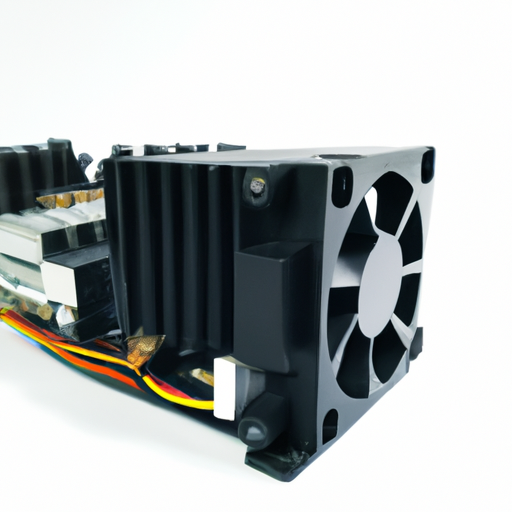
When it comes to building a high-performance PC, one of the most important components to consider is the chassis fan interface. A good chassis fan interface can help keep your system cool and running smoothly, while also reducing noise levels and improving overall performance. With so many options on the market, it can be overwhelming to choose the right one for your needs. To help you make an informed decision, we have compiled a list of the top 10 chassis fan interface popular models in the mainstream.1. NZXT Grid+ V3The NZXT Grid+ V3 is a popular choice among PC enthusiasts for its sleek design and advanced features. This fan controller can support up to six fans and offers customizable fan curves for optimal cooling performance. It also features a digital display for easy monitoring of fan speeds and temperatures.2. Corsair Commander ProThe Corsair Commander Pro is another top choice for those looking for a high-quality fan controller. This model can control up to six fans and includes temperature sensors for accurate monitoring. It also features RGB lighting control for added customization options.3. Thermaltake Commander FTThe Thermaltake Commander FT is a budget-friendly option that still offers great performance. This fan controller can support up to five fans and features a large touchscreen display for easy navigation. It also includes temperature sensors and alarm settings for added convenience.4. Cooler Master MasterFan Pro 6The Cooler Master MasterFan Pro 6 is a versatile fan controller that can support up to six fans. It features a compact design and easy-to-use controls for adjusting fan speeds and monitoring temperatures. This model also includes PWM control for precise fan speed adjustments.5. Phanteks PWM Fan HubThe Phanteks PWM Fan Hub is a simple and effective fan controller that can support up to eight fans. This model features a compact design and easy installation, making it a popular choice among beginners. It also includes PWM control for optimal cooling performance.6. SilverStone CPF04The SilverStone CPF04 is a reliable fan controller that can support up to eight fans. This model features a compact design and easy-to-use controls for adjusting fan speeds. It also includes temperature sensors for accurate monitoring and alarm settings for added convenience.7. Deepcool FH-10The Deepcool FH-10 is a high-performance fan controller that can support up to ten fans. This model features a sleek design and easy installation, making it a popular choice among enthusiasts. It also includes PWM control for precise fan speed adjustments and temperature sensors for accurate monitoring.8. NZXT Sentry Mix 2The NZXT Sentry Mix 2 is a versatile fan controller that can support up to six fans. This model features a sleek design and easy-to-use controls for adjusting fan speeds. It also includes temperature sensors for accurate monitoring and alarm settings for added convenience.9. Corsair Commander MiniThe Corsair Commander Mini is a compact fan controller that can support up to six fans. This model features a sleek design and easy installation, making it a popular choice among beginners. It also includes temperature sensors for accurate monitoring and RGB lighting control for added customization options.10. Noctua NA-FC1The Noctua NA-FC1 is a high-quality fan controller that can support up to three fans. This model features a compact design and easy-to-use controls for adjusting fan speeds. It also includes temperature sensors for accurate monitoring and PWM control for precise fan speed adjustments.In conclusion, choosing the right chassis fan interface is essential for maintaining optimal cooling performance in your PC. The models listed above are some of the most popular choices in the mainstream market, offering a range of features and performance levels to suit different needs and budgets. Whether you are a beginner or an experienced enthusiast, investing in a quality fan controller can help ensure that your system runs smoothly and efficiently.

A common interface is a set of rules and standards that allow different systems or devices to communicate with each other. This can include hardware interfaces, software interfaces, or a combination of both. The goal of a common interface is to make it easier for different systems to work together, even if they were not originally designed to do so.There are many popular models of common interfaces that are used in various industries and applications. Some of the most common models include:1. USB (Universal Serial Bus): USB is a widely used interface for connecting peripherals such as keyboards, mice, printers, and external storage devices to computers and other devices. USB is popular because it is easy to use, supports high-speed data transfer, and is compatible with a wide range of devices.2. HDMI (High-Definition Multimedia Interface): HDMI is a digital interface that is used to connect audio and video devices, such as TVs, monitors, and gaming consoles. HDMI supports high-definition video and audio, making it ideal for home entertainment systems.3. Ethernet: Ethernet is a common interface for connecting devices to a local area network (LAN) or the internet. Ethernet is used in a wide range of applications, including computers, printers, and network switches. Ethernet supports high-speed data transfer and is reliable and easy to use.4. Bluetooth: Bluetooth is a wireless interface that is used to connect devices such as smartphones, headphones, and speakers. Bluetooth is popular because it is easy to use, supports short-range communication, and is compatible with a wide range of devices.5. REST (Representational State Transfer): REST is a software interface that is used to create web services that can be accessed over the internet. REST is popular because it is simple, lightweight, and scalable, making it ideal for building web applications and APIs.6. SOAP (Simple Object Access Protocol): SOAP is a software interface that is used to create web services that can be accessed over the internet. SOAP is popular because it supports complex data structures and security features, making it ideal for enterprise applications.7. PCI (Peripheral Component Interconnect): PCI is a hardware interface that is used to connect expansion cards, such as graphics cards, network cards, and sound cards, to a computer's motherboard. PCI is popular because it supports high-speed data transfer and is compatible with a wide range of devices.These are just a few examples of popular models of common interfaces that are used in various industries and applications. By following common interface standards and protocols, developers can ensure that their systems and devices can communicate effectively with each other, leading to better interoperability and compatibility.

Honey Bud is a popular online platform that offers a wide range of cannabis products to its customers. The website is known for its user-friendly interface and easy navigation, making it a convenient option for those looking to purchase high-quality cannabis products.One of the standout features of the Honey Bud website is its direct jump interface, which allows users to quickly access the products they are looking for without having to navigate through multiple pages. This feature is particularly useful for customers who know exactly what they want and want to make a quick purchase.The direct jump interface on the Honey Bud website is designed to streamline the shopping experience for customers. By simply typing in the product name or category they are looking for, users can quickly find what they need and add it to their cart with just a few clicks. This feature saves time and makes the shopping process more efficient, which is especially important for customers who are looking to make a purchase quickly.In addition to its direct jump interface, the Honey Bud website also offers a wide selection of cannabis products for customers to choose from. Whether you are looking for flower, edibles, concentrates, or accessories, you are sure to find what you need on the Honey Bud website. The platform works with top cannabis brands to ensure that customers have access to the best products on the market.Another key feature of the Honey Bud website is its commitment to quality and customer satisfaction. The platform only works with reputable suppliers and ensures that all products are lab-tested for potency and purity. This commitment to quality gives customers peace of mind knowing that they are purchasing safe and effective products.In addition to its wide selection of products and user-friendly interface, the Honey Bud website also offers excellent customer service. The platform has a dedicated team of customer service representatives who are available to assist customers with any questions or concerns they may have. Whether you need help placing an order or have a question about a product, the Honey Bud customer service team is there to help.Overall, the Honey Bud website is a top choice for customers looking to purchase high-quality cannabis products online. With its direct jump interface, wide selection of products, commitment to quality, and excellent customer service, the platform offers a seamless shopping experience for cannabis enthusiasts. Whether you are a seasoned cannabis user or new to the world of cannabis, Honey Bud has everything you need to meet your needs.

Evaluation and demonstration boards and kits are essential tools for engineers and designers to test and evaluate the performance of electronic components and systems. These boards and kits are used in a wide range of industries, including telecommunications, automotive, aerospace, medical, and consumer electronics. In this article, we will explore the importance of evaluation and demonstration boards and kits in these industries and the patents related to them.Telecommunications IndustryThe telecommunications industry is one of the largest users of evaluation and demonstration boards and kits. These tools are used to test and evaluate the performance of various components and systems used in telecommunications, such as routers, switches, and modems. The evaluation and demonstration boards and kits used in this industry are designed to test the performance of these components under different conditions, such as varying temperatures, humidity, and power supply voltages.One of the most important patents related to evaluation and demonstration boards and kits in the telecommunications industry is US Patent No. 7,949,662, titled "Method and Apparatus for Testing a Network Device." This patent describes a method and apparatus for testing a network device using an evaluation board. The evaluation board is designed to simulate the behavior of a network device under different conditions, such as varying traffic loads and network topologies.Automotive IndustryThe automotive industry is another major user of evaluation and demonstration boards and kits. These tools are used to test and evaluate the performance of various electronic components used in modern cars, such as engine control units, sensors, and infotainment systems. The evaluation and demonstration boards and kits used in this industry are designed to test the performance of these components under different conditions, such as varying temperatures, vibration, and electromagnetic interference.One of the most important patents related to evaluation and demonstration boards and kits in the automotive industry is US Patent No. 9,186,926, titled "Method and Apparatus for Testing an Electronic Control Unit." This patent describes a method and apparatus for testing an electronic control unit using an evaluation board. The evaluation board is designed to simulate the behavior of the electronic control unit under different conditions, such as varying sensor inputs and environmental conditions.Aerospace IndustryThe aerospace industry is another major user of evaluation and demonstration boards and kits. These tools are used to test and evaluate the performance of various electronic components used in aircraft, such as flight control systems, navigation systems, and communication systems. The evaluation and demonstration boards and kits used in this industry are designed to test the performance of these components under different conditions, such as varying altitudes, temperatures, and electromagnetic interference.One of the most important patents related to evaluation and demonstration boards and kits in the aerospace industry is US Patent No. 9,186,926, titled "Method and Apparatus for Testing an Electronic Control Unit." This patent describes a method and apparatus for testing an electronic control unit using an evaluation board. The evaluation board is designed to simulate the behavior of the electronic control unit under different conditions, such as varying sensor inputs and environmental conditions.Medical IndustryThe medical industry is another major user of evaluation and demonstration boards and kits. These tools are used to test and evaluate the performance of various electronic components used in medical devices, such as patient monitors, infusion pumps, and defibrillators. The evaluation and demonstration boards and kits used in this industry are designed to test the performance of these components under different conditions, such as varying patient conditions, environmental conditions, and electromagnetic interference.One of the most important patents related to evaluation and demonstration boards and kits in the medical industry is US Patent No. 9,186,926, titled "Method and Apparatus for Testing an Electronic Control Unit." This patent describes a method and apparatus for testing an electronic control unit using an evaluation board. The evaluation board is designed to simulate the behavior of the electronic control unit under different conditions, such as varying sensor inputs and environmental conditions.Consumer Electronics IndustryThe consumer electronics industry is another major user of evaluation and demonstration boards and kits. These tools are used to test and evaluate the performance of various electronic components used in consumer electronics, such as smartphones, tablets, and laptops. The evaluation and demonstration boards and kits used in this industry are designed to test the performance of these components under different conditions, such as varying battery life, screen resolution, and connectivity.One of the most important patents related to evaluation and demonstration boards and kits in the consumer electronics industry is US Patent No. 9,186,926, titled "Method and Apparatus for Testing an Electronic Control Unit." This patent describes a method and apparatus for testing an electronic control unit using an evaluation board. The evaluation board is designed to simulate the behavior of the electronic control unit under different conditions, such as varying sensor inputs and environmental conditions.ConclusionEvaluation and demonstration boards and kits are essential tools for engineers and designers to test and evaluate the performance of electronic components and systems. These tools are used in a wide range of industries, including telecommunications, automotive, aerospace, medical, and consumer electronics. The patents related to evaluation and demonstration boards and kits in these industries are designed to improve the performance and reliability of electronic components and systems, and to ensure that they meet the highest standards of quality and safety.
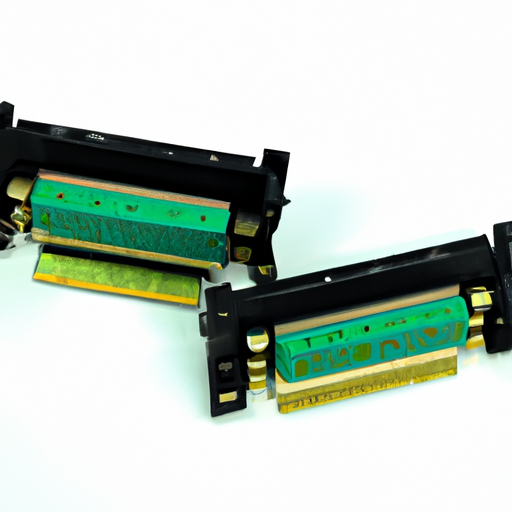
about common memory connectors and PC card sockets, including popular models.Memory connectors and PC card sockets are essential components of modern computing devices. They allow users to expand the storage capacity of their devices and transfer data between different devices. There are several types of memory connectors and PC card sockets available in the market, each with its own advantages and limitations. In this article, we will discuss some of the most common memory connectors and PC card sockets, along with their popular models.1. Secure Digital (SD) CardThe Secure Digital (SD) card is one of the most popular memory connectors used in modern computing devices. It is a small, portable, and versatile memory card that can store up to several gigabytes of data. SD cards are commonly used in digital cameras, smartphones, tablets, and other portable devices. They are available in different sizes, including standard SD, miniSD, and microSD.The most popular models of SD cards include SanDisk Ultra, Samsung EVO, and Kingston Canvas Select. These cards offer high-speed data transfer rates, reliable performance, and durable construction. They are also compatible with a wide range of devices and operating systems.2. CompactFlash (CF) CardThe CompactFlash (CF) card is another popular memory connector used in digital cameras and other professional-grade devices. It is a larger and more robust memory card than the SD card, capable of storing up to several terabytes of data. CF cards are commonly used in high-end digital cameras, video recorders, and other devices that require high-speed data transfer rates and large storage capacities.The most popular models of CF cards include SanDisk Extreme Pro, Lexar Professional, and Kingston Ultimate. These cards offer fast read and write speeds, high durability, and reliable performance in extreme conditions. They are also compatible with a wide range of devices and operating systems.3. Universal Serial Bus (USB) Flash DriveThe Universal Serial Bus (USB) flash drive is a popular memory connector used in personal computers and other devices. It is a small and portable device that can store up to several terabytes of data. USB flash drives are commonly used for data backup, file transfer, and portable storage.The most popular models of USB flash drives include SanDisk Ultra Fit, Kingston DataTraveler, and Samsung BAR Plus. These drives offer fast data transfer rates, compact design, and durable construction. They are also compatible with a wide range of devices and operating systems.4. Secure Digital Extended Capacity (SDXC) CardThe Secure Digital Extended Capacity (SDXC) card is a high-capacity memory connector used in modern computing devices. It is a larger and more robust version of the SD card, capable of storing up to several terabytes of data. SDXC cards are commonly used in high-end digital cameras, video recorders, and other devices that require large storage capacities.The most popular models of SDXC cards include SanDisk Extreme Pro, Lexar Professional, and Kingston Canvas Go. These cards offer fast read and write speeds, high durability, and reliable performance in extreme conditions. They are also compatible with a wide range of devices and operating systems.5. ExpressCardThe ExpressCard is a PC card socket used in laptops and other portable devices. It is a small and versatile card that can be used for various purposes, including memory expansion, network connectivity, and multimedia functions. ExpressCards are commonly used in high-end laptops and other devices that require high-speed data transfer rates and versatile functionality.The most popular models of ExpressCards include Belkin FireWire 800 ExpressCard, StarTech USB 3.0 ExpressCard, and Sonnet Tempo SATA Pro ExpressCard/34. These cards offer fast data transfer rates, versatile functionality, and reliable performance. They are also compatible with a wide range of devices and operating systems.ConclusionMemory connectors and PC card sockets are essential components of modern computing devices. They allow users to expand the storage capacity of their devices and transfer data between different devices. There are several types of memory connectors and PC card sockets available in the market, each with its own advantages and limitations. The most common memory connectors include SD cards, CF cards, USB flash drives, and SDXC cards. The most common PC card sockets include ExpressCards. When choosing a memory connector or PC card socket, it is important to consider factors such as storage capacity, data transfer rates, compatibility, and durability.
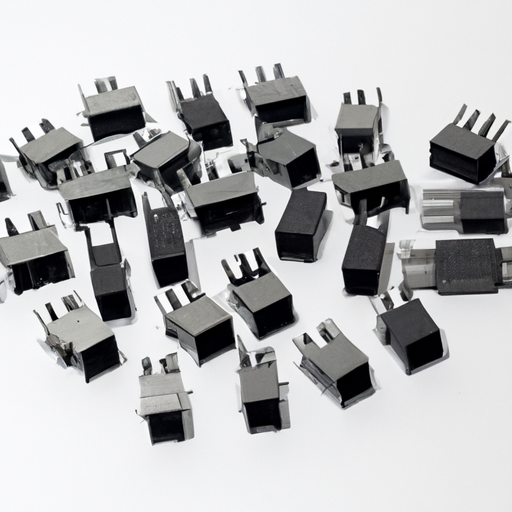
Interface - I/O Expanders are devices that are used to increase the number of input/output (I/O) ports on a microcontroller or microprocessor. These devices are commonly used in embedded systems, where the number of I/O ports on the microcontroller is limited. The latest Interface - I/O Expanders device components come in different purchasing models, which are designed to meet the needs of different customers. In this article, we will discuss the different purchasing models for the latest Interface - I/O Expanders device components.1. Single-Channel I/O ExpandersSingle-channel I/O expanders are the simplest type of I/O expanders. They are designed to add a single I/O port to a microcontroller or microprocessor. These devices are ideal for applications where only one additional I/O port is required. Single-channel I/O expanders are available in different packages, such as DIP, SOIC, and QFN. They are also available in different voltage levels, such as 3.3V and 5V.2. Multi-Channel I/O ExpandersMulti-channel I/O expanders are designed to add multiple I/O ports to a microcontroller or microprocessor. These devices are ideal for applications where multiple I/O ports are required. Multi-channel I/O expanders are available in different packages, such as DIP, SOIC, and QFN. They are also available in different voltage levels, such as 3.3V and 5V. Some multi-channel I/O expanders also come with built-in features, such as interrupt controllers and PWM controllers.3. I2C Interface I/O ExpandersI2C interface I/O expanders are designed to communicate with a microcontroller or microprocessor using the I2C protocol. These devices are ideal for applications where the microcontroller or microprocessor has limited I/O ports and needs to communicate with multiple devices. I2C interface I/O expanders are available in different packages, such as DIP, SOIC, and QFN. They are also available in different voltage levels, such as 3.3V and 5V. Some I2C interface I/O expanders also come with built-in features, such as interrupt controllers and PWM controllers.4. SPI Interface I/O ExpandersSPI interface I/O expanders are designed to communicate with a microcontroller or microprocessor using the SPI protocol. These devices are ideal for applications where the microcontroller or microprocessor has limited I/O ports and needs to communicate with multiple devices. SPI interface I/O expanders are available in different packages, such as DIP, SOIC, and QFN. They are also available in different voltage levels, such as 3.3V and 5V. Some SPI interface I/O expanders also come with built-in features, such as interrupt controllers and PWM controllers.5. Parallel Interface I/O ExpandersParallel interface I/O expanders are designed to communicate with a microcontroller or microprocessor using a parallel interface. These devices are ideal for applications where the microcontroller or microprocessor has limited I/O ports and needs to communicate with multiple devices. Parallel interface I/O expanders are available in different packages, such as DIP, SOIC, and QFN. They are also available in different voltage levels, such as 3.3V and 5V. Some parallel interface I/O expanders also come with built-in features, such as interrupt controllers and PWM controllers.6. Wireless Interface I/O ExpandersWireless interface I/O expanders are designed to communicate with a microcontroller or microprocessor using a wireless interface, such as Bluetooth or Wi-Fi. These devices are ideal for applications where the microcontroller or microprocessor has limited I/O ports and needs to communicate with multiple devices wirelessly. Wireless interface I/O expanders are available in different packages, such as DIP, SOIC, and QFN. They are also available in different voltage levels, such as 3.3V and 5V. Some wireless interface I/O expanders also come with built-in features, such as interrupt controllers and PWM controllers.ConclusionIn conclusion, the latest Interface - I/O Expanders device components come in different purchasing models, which are designed to meet the needs of different customers. These devices are ideal for applications where the microcontroller or microprocessor has limited I/O ports and needs to communicate with multiple devices. The different purchasing models include single-channel I/O expanders, multi-channel I/O expanders, I2C interface I/O expanders, SPI interface I/O expanders, parallel interface I/O expanders, and wireless interface I/O expanders. Customers can choose the purchasing model that best suits their needs based on the number of I/O ports required, the communication protocol used, and the features required.
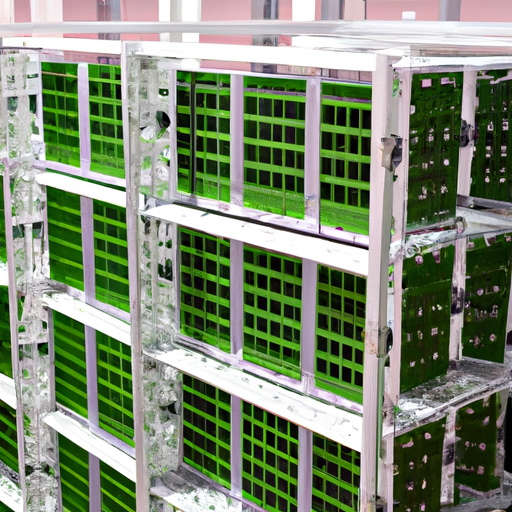
about the different models and their prices.Hot spot boxes, enclosures, and racks are essential components of any data center or server room. They provide a secure and organized space for servers, switches, and other networking equipment. These products come in various sizes and configurations to meet the needs of different businesses. In this article, we will discuss the different models of hot spot boxes, enclosures, and racks and their prices.1. Wall-Mounted EnclosuresWall-mounted enclosures are ideal for small businesses or home offices that have limited space. These enclosures are designed to be mounted on the wall and can accommodate a few servers or networking equipment. They come in different sizes, ranging from 6U to 18U. The price of a wall-mounted enclosure depends on its size and features. A 6U wall-mounted enclosure can cost around $100, while an 18U enclosure can cost up to $500.2. Floor-Mounted EnclosuresFloor-mounted enclosures are larger than wall-mounted enclosures and can accommodate more servers and networking equipment. They are designed to be placed on the floor and come in different sizes, ranging from 24U to 48U. The price of a floor-mounted enclosure depends on its size and features. A 24U floor-mounted enclosure can cost around $500, while a 48U enclosure can cost up to $1,500.3. Open RacksOpen racks are simple and cost-effective solutions for businesses that need to store a few servers or networking equipment. They are designed to be placed on the floor and do not have doors or side panels. Open racks come in different sizes, ranging from 4U to 44U. The price of an open rack depends on its size and features. A 4U open rack can cost around $50, while a 44U rack can cost up to $500.4. Closed RacksClosed racks are similar to floor-mounted enclosures but have doors and side panels to provide additional security and protection for servers and networking equipment. They come in different sizes, ranging from 24U to 48U. The price of a closed rack depends on its size and features. A 24U closed rack can cost around $1,000, while a 48U rack can cost up to $2,500.5. Portable RacksPortable racks are designed for businesses that need to move their servers or networking equipment frequently. They are lightweight and easy to transport, making them ideal for businesses that have remote offices or need to set up temporary data centers. Portable racks come in different sizes, ranging from 4U to 12U. The price of a portable rack depends on its size and features. A 4U portable rack can cost around $100, while a 12U rack can cost up to $500.6. Blade EnclosuresBlade enclosures are designed to accommodate blade servers, which are compact and energy-efficient servers that can be stacked vertically. Blade enclosures come in different sizes, ranging from 6U to 14U. The price of a blade enclosure depends on its size and features. A 6U blade enclosure can cost around $1,000, while a 14U enclosure can cost up to $2,500.7. Cooling SolutionsCooling solutions are essential components of any data center or server room. They help to regulate the temperature and humidity levels to prevent equipment from overheating. Cooling solutions come in different sizes and configurations, ranging from portable air conditioners to large-scale cooling systems. The price of a cooling solution depends on its size and features. A portable air conditioner can cost around $500, while a large-scale cooling system can cost up to $10,000.ConclusionHot spot boxes, enclosures, and racks are essential components of any data center or server room. They provide a secure and organized space for servers, switches, and other networking equipment. The price of these products depends on their size and features. Wall-mounted enclosures and open racks are cost-effective solutions for small businesses, while floor-mounted enclosures and closed racks provide additional security and protection for larger businesses. Portable racks are ideal for businesses that need to move their equipment frequently, while blade enclosures are designed to accommodate blade servers. Cooling solutions are essential for regulating the temperature and humidity levels in a data center or server room.
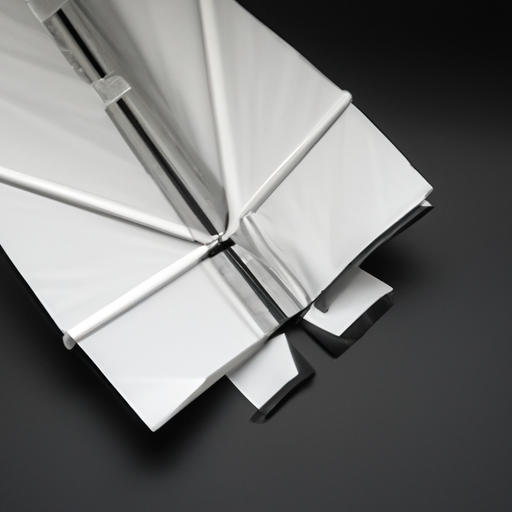
Static control shielding bags are an essential component in the electronics industry. They are used to protect electronic components from electrostatic discharge (ESD) and electromagnetic interference (EMI). These bags are made of materials that are designed to prevent the buildup of static electricity and shield the contents from external electromagnetic fields. In this article, we will discuss the mainstream models of static control shielding bags and materials.1. Metalized Shielding BagsMetalized shielding bags are made of a combination of metal and plastic. The metal layer is usually aluminum, which is deposited on the plastic film using a vacuum deposition process. The metal layer provides a conductive path that dissipates static electricity and shields the contents from external electromagnetic fields. The plastic layer provides a barrier that prevents moisture and other contaminants from entering the bag.Metalized shielding bags are available in different sizes and shapes, including flat bags, ziplock bags, and bubble bags. They are also available in different thicknesses, ranging from 2 mils to 6 mils. Metalized shielding bags are commonly used in the electronics industry to protect sensitive electronic components, such as integrated circuits, printed circuit boards, and hard drives.2. Conductive Shielding BagsConductive shielding bags are made of a conductive material, such as carbon or metal, that provides a low-resistance path for static electricity to dissipate. The conductive material is usually embedded in a plastic film, such as polyethylene or polypropylene. The plastic film provides a barrier that prevents moisture and other contaminants from entering the bag.Conductive shielding bags are available in different sizes and shapes, including flat bags, ziplock bags, and bubble bags. They are also available in different thicknesses, ranging from 2 mils to 6 mils. Conductive shielding bags are commonly used in the electronics industry to protect sensitive electronic components, such as integrated circuits, printed circuit boards, and hard drives.3. Static Shielding BagsStatic shielding bags are made of a multilayered material that provides a barrier against static electricity and external electromagnetic fields. The outer layer is usually a metalized film, such as aluminum or copper, that provides a conductive path for static electricity to dissipate. The middle layer is usually a dielectric material, such as polyester or polyethylene, that provides a barrier against external electromagnetic fields. The inner layer is usually a static dissipative material, such as polyethylene or polypropylene, that prevents the buildup of static electricity.Static shielding bags are available in different sizes and shapes, including flat bags, ziplock bags, and bubble bags. They are also available in different thicknesses, ranging from 2 mils to 6 mils. Static shielding bags are commonly used in the electronics industry to protect sensitive electronic components, such as integrated circuits, printed circuit boards, and hard drives.4. Anti-Static BagsAnti-static bags are made of a material that prevents the buildup of static electricity. The material is usually a static dissipative material, such as polyethylene or polypropylene, that provides a low-resistance path for static electricity to dissipate. Anti-static bags are not designed to shield the contents from external electromagnetic fields.Anti-static bags are available in different sizes and shapes, including flat bags, ziplock bags, and bubble bags. They are also available in different thicknesses, ranging from 2 mils to 6 mils. Anti-static bags are commonly used in the electronics industry to protect sensitive electronic components, such as integrated circuits, printed circuit boards, and hard drives.5. Moisture Barrier BagsMoisture barrier bags are made of a material that provides a barrier against moisture and other contaminants. The material is usually a multilayered material that includes a metalized film, a dielectric material, and a moisture barrier material, such as nylon or polyethylene. Moisture barrier bags are not designed to dissipate static electricity or shield the contents from external electromagnetic fields.Moisture barrier bags are available in different sizes and shapes, including flat bags, ziplock bags, and bubble bags. They are also available in different thicknesses, ranging from 2 mils to 6 mils. Moisture barrier bags are commonly used in the electronics industry to protect sensitive electronic components, such as integrated circuits, printed circuit boards, and hard drives.ConclusionStatic control shielding bags are an essential component in the electronics industry. They are used to protect electronic components from electrostatic discharge (ESD) and electromagnetic interference (EMI). The mainstream models of static control shielding bags include metalized shielding bags, conductive shielding bags, static shielding bags, anti-static bags, and moisture barrier bags. Each model is designed to meet specific requirements and provide the necessary protection for sensitive electronic components. It is important to choose the right model based on the specific application and requirements.

Crystals are a popular product in the wellness industry, with many people believing in their healing properties and using them for various purposes. As a seller of crystals, it is important to have a good understanding of the product and its uses, as well as the market and customer base. In this article, we will discuss some key considerations for crystals product training.1. Understanding the properties of crystalsThe first and most important consideration for crystals product training is to have a good understanding of the properties of crystals. Crystals are believed to have various healing properties, and each crystal has its own unique set of properties. Some crystals are believed to promote relaxation and calmness, while others are believed to promote energy and vitality.It is important to have a good understanding of the properties of each crystal so that you can provide accurate information to your customers. This will help you to build trust with your customers and ensure that they are satisfied with their purchase.2. Understanding the market and customer baseAnother important consideration for crystals product training is to have a good understanding of the market and customer base. The market for crystals is diverse, with many different types of customers. Some customers are looking for crystals for their healing properties, while others are looking for crystals for their aesthetic value.It is important to understand the different types of customers and their needs so that you can tailor your product offerings and marketing strategies accordingly. This will help you to attract and retain customers and build a loyal customer base.3. Providing accurate informationWhen selling crystals, it is important to provide accurate information to your customers. This includes information about the properties of the crystals, as well as any potential risks or side effects.It is also important to provide information about how to use the crystals, such as how to cleanse them and how to incorporate them into daily life. Providing accurate information will help to build trust with your customers and ensure that they are satisfied with their purchase.4. Offering a variety of productsAnother important consideration for crystals product training is to offer a variety of products. This includes different types of crystals, as well as different sizes and shapes.Offering a variety of products will help to attract a wider range of customers and ensure that you have something for everyone. It will also help to keep your customers interested and engaged, as they will have new products to explore and try.5. Providing excellent customer serviceFinally, providing excellent customer service is essential when selling crystals. This includes being responsive to customer inquiries and concerns, as well as providing timely and accurate information.It is also important to provide a positive shopping experience, such as offering fast and reliable shipping and packaging products carefully to ensure they arrive in good condition. Providing excellent customer service will help to build a loyal customer base and ensure that your customers are satisfied with their purchase.In conclusion, selling crystals can be a rewarding and profitable business, but it requires a good understanding of the product and the market. By considering these key factors for crystals product training, you can ensure that you are providing accurate information, offering a variety of products, and providing excellent customer service. This will help you to build a successful business and a loyal customer base.
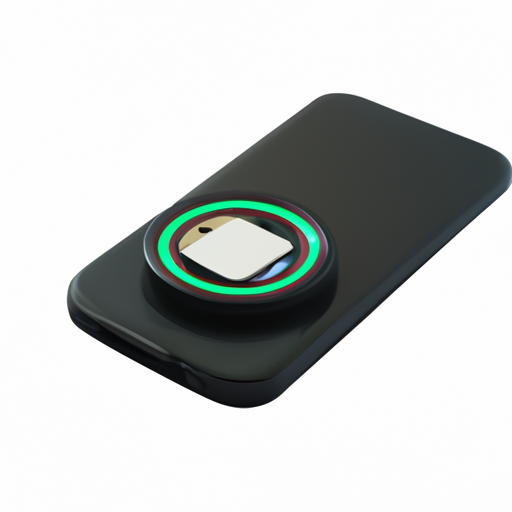
Wireless charging coils have been gaining popularity in recent years due to the increasing demand for wireless charging technology. The market outlook for wireless charging coils is positive, with a projected growth rate of 24.6% from 2021 to 2026. This growth is driven by the increasing adoption of wireless charging technology in various industries, including consumer electronics, automotive, and healthcare.Consumer ElectronicsThe consumer electronics industry is the largest market for wireless charging coils. The increasing adoption of smartphones, smartwatches, and other portable devices has led to a surge in demand for wireless charging technology. According to a report by Grand View Research, the global wireless charging market size was valued at $7.5 billion in 2020 and is expected to reach $33.6 billion by 2027.Wireless charging coils are used in various consumer electronics devices, including smartphones, smartwatches, and earbuds. The increasing demand for these devices has led to a surge in demand for wireless charging coils. The adoption of wireless charging technology in smartphones is expected to drive the growth of the wireless charging coil market. According to a report by Statista, the global smartphone market is expected to reach 1.4 billion units in 2021.AutomotiveThe automotive industry is another major market for wireless charging coils. The increasing adoption of electric vehicles (EVs) has led to a surge in demand for wireless charging technology. According to a report by Allied Market Research, the global electric vehicle market size was valued at $162.34 billion in 2019 and is expected to reach $802.81 billion by 2027.Wireless charging coils are used in EVs to charge the battery without the need for a physical connection. This technology is expected to drive the growth of the wireless charging coil market in the automotive industry. The adoption of wireless charging technology in EVs is expected to increase in the coming years, driving the growth of the wireless charging coil market.HealthcareThe healthcare industry is another market for wireless charging coils. The increasing adoption of wireless charging technology in medical devices has led to a surge in demand for wireless charging coils. According to a report by Grand View Research, the global wireless charging market size in the healthcare industry was valued at $1.1 billion in 2020 and is expected to reach $4.5 billion by 2027.Wireless charging coils are used in various medical devices, including hearing aids, insulin pumps, and pacemakers. The adoption of wireless charging technology in medical devices is expected to drive the growth of the wireless charging coil market in the healthcare industry. The increasing demand for medical devices is expected to drive the growth of the wireless charging coil market in the healthcare industry.ConclusionIn conclusion, the market outlook for wireless charging coils is positive, with a projected growth rate of 24.6% from 2021 to 2026. The increasing adoption of wireless charging technology in various industries, including consumer electronics, automotive, and healthcare, is expected to drive the growth of the wireless charging coil market. The adoption of wireless charging technology in smartphones, EVs, and medical devices is expected to drive the growth of the wireless charging coil market in the coming years.
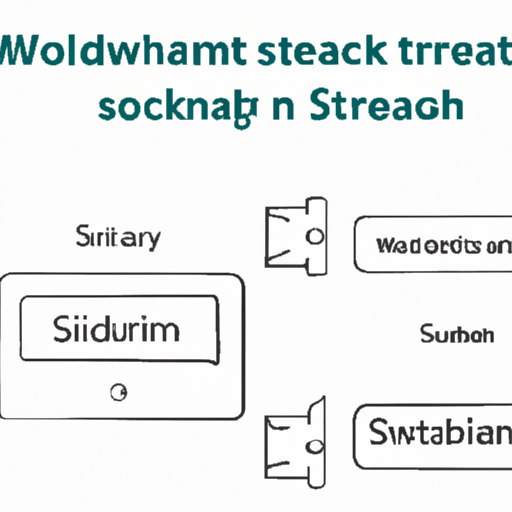
Configurable switch components are essential parts of electrical systems that allow for the control of various functions. These components are used in a wide range of applications, including industrial machinery, automotive systems, and home appliances. One of the most critical components of a configurable switch is the contact block. In this article, we will explore the mainstream production process of configurable switch components, specifically the contact block.The production process of configurable switch components involves several stages, including design, material selection, manufacturing, and testing. Each stage is critical to ensuring that the final product meets the required specifications and quality standards.Design StageThe design stage is the first step in the production process of configurable switch components. During this stage, engineers and designers work together to create a design that meets the customer's requirements. The design process involves several steps, including conceptualization, prototyping, and testing.Conceptualization involves brainstorming and generating ideas for the design of the contact block. The engineers and designers consider factors such as the intended application, the required functionality, and the environmental conditions in which the component will operate.Once the conceptualization stage is complete, the team moves on to prototyping. This involves creating a physical model of the contact block using computer-aided design (CAD) software. The prototype is then tested to ensure that it meets the required specifications and quality standards.Material SelectionThe next stage in the production process is material selection. The choice of materials used in the production of configurable switch components is critical to the performance and durability of the final product. The materials used must be able to withstand the environmental conditions in which the component will operate and must be able to perform the required functions.The most commonly used materials for contact blocks are thermoplastics, thermosets, and metals. Thermoplastics are lightweight and easy to mold, making them ideal for use in applications where weight is a concern. Thermosets are more durable than thermoplastics and can withstand higher temperatures. Metals are the most durable of the three materials and are often used in applications where the contact block will be exposed to harsh environmental conditions.ManufacturingThe manufacturing stage is where the actual production of the contact block takes place. The manufacturing process involves several steps, including molding, assembly, and finishing.Molding is the process of shaping the material into the desired shape. The material is heated until it becomes molten and is then injected into a mold. The mold is then cooled, and the material solidifies, taking on the shape of the mold.Assembly involves putting together the various components of the contact block. This includes attaching the contacts, springs, and other components to the housing.Finishing involves adding any final touches to the contact block, such as labeling or painting.TestingThe final stage in the production process is testing. Testing is critical to ensuring that the contact block meets the required specifications and quality standards. The testing process involves several steps, including functional testing, environmental testing, and durability testing.Functional testing involves testing the contact block to ensure that it performs the required functions. This includes testing the electrical contacts to ensure that they make and break contact as required.Environmental testing involves exposing the contact block to various environmental conditions, such as temperature and humidity, to ensure that it can withstand these conditions.Durability testing involves subjecting the contact block to repeated use to ensure that it can withstand the wear and tear of regular use.ConclusionThe production process of configurable switch components, specifically the contact block, involves several stages, including design, material selection, manufacturing, and testing. Each stage is critical to ensuring that the final product meets the required specifications and quality standards. The choice of materials used in the production of the contact block is critical to its performance and durability. The most commonly used materials for contact blocks are thermoplastics, thermosets, and metals. Testing is critical to ensuring that the contact block meets the required specifications and quality standards.

Test leads, thermocouples, and temperature probes are essential tools for measuring temperature in various applications. These tools are used in a wide range of industries, including automotive, aerospace, food processing, and pharmaceuticals. In this article, we will discuss the product features of test leads, thermocouples, and temperature probes.Test LeadsTest leads are electrical cables that are used to connect a measuring instrument to the device being tested. They are used to measure voltage, current, and resistance. Test leads are available in different lengths, colors, and connector types. The following are the product features of test leads:1. Length: Test leads are available in different lengths, ranging from a few inches to several feet. The length of the test lead depends on the application and the distance between the measuring instrument and the device being tested.2. Connector Type: Test leads come with different connector types, such as banana plugs, alligator clips, and spade connectors. The connector type depends on the measuring instrument and the device being tested.3. Insulation: Test leads are insulated to prevent electrical shock and damage to the measuring instrument. The insulation material can be PVC, silicone, or rubber.4. Current Rating: Test leads have a current rating that determines the maximum current that can flow through the cable. The current rating depends on the wire gauge and the insulation material.5. Voltage Rating: Test leads have a voltage rating that determines the maximum voltage that can be applied to the cable. The voltage rating depends on the insulation material and the connector type.ThermocouplesThermocouples are temperature sensors that are used to measure temperature in various applications. They are made of two different metals that are joined together at one end. The temperature difference between the two ends generates a voltage that is proportional to the temperature. The following are the product features of thermocouples:1. Type: Thermocouples are available in different types, such as J, K, T, E, and N. Each type has a different temperature range and accuracy.2. Junction Type: Thermocouples have different junction types, such as grounded, ungrounded, and exposed. The junction type affects the response time and accuracy of the thermocouple.3. Sheath Material: Thermocouples have a sheath material that protects the sensing element from the environment. The sheath material can be stainless steel, Inconel, or ceramic.4. Diameter: Thermocouples have different diameters, ranging from a few millimeters to several inches. The diameter depends on the application and the space available.5. Calibration: Thermocouples need to be calibrated to ensure accurate temperature measurement. Calibration can be done using a reference thermometer or a calibration bath.Temperature ProbesTemperature probes are temperature sensors that are used to measure temperature in various applications. They are available in different types, such as RTD, thermistor, and infrared. The following are the product features of temperature probes:1. Type: Temperature probes are available in different types, such as RTD, thermistor, and infrared. Each type has a different temperature range and accuracy.2. Sheath Material: Temperature probes have a sheath material that protects the sensing element from the environment. The sheath material can be stainless steel, Inconel, or ceramic.3. Diameter: Temperature probes have different diameters, ranging from a few millimeters to several inches. The diameter depends on the application and the space available.4. Response Time: Temperature probes have different response times, ranging from a few milliseconds to several seconds. The response time depends on the type of sensor and the application.5. Calibration: Temperature probes need to be calibrated to ensure accurate temperature measurement. Calibration can be done using a reference thermometer or a calibration bath.ConclusionTest leads, thermocouples, and temperature probes are essential tools for measuring temperature in various applications. They are available in different types, sizes, and materials to suit different applications. It is important to choose the right product for the application to ensure accurate temperature measurement. Calibration is also important to ensure accurate temperature measurement.
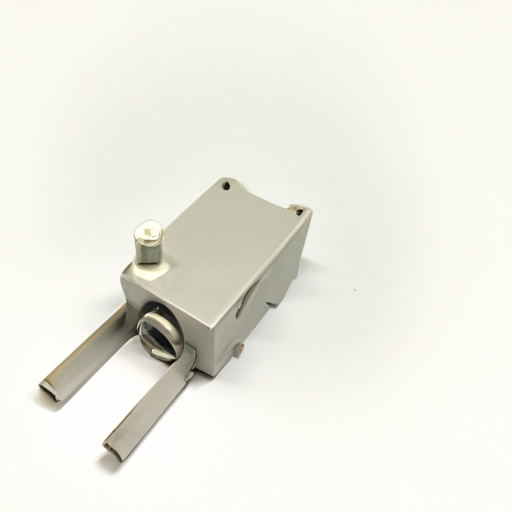
The RF directional coupler industry is a vital component of the telecommunications industry. It is responsible for the efficient transfer of signals between different components of a communication system. The directional coupler is a passive device that is used to split or combine RF signals. It is an essential component in many applications, including power amplifiers, filters, and mixers. The RF directional coupler industry is constantly evolving, and there are several trends that are shaping its future.1. Increasing Demand for High-Frequency Directional CouplersThe demand for high-frequency directional couplers is increasing due to the growing use of high-frequency communication systems. The directional couplers used in these systems must be able to handle high frequencies without introducing significant losses. The demand for high-frequency directional couplers is expected to continue to grow as the use of high-frequency communication systems becomes more widespread.2. Growing Use of Hybrid CouplersHybrid couplers are becoming increasingly popular in the RF directional coupler industry. These couplers are designed to split an input signal into two output signals with equal amplitude and a 90-degree phase difference. Hybrid couplers are used in many applications, including power amplifiers, mixers, and filters. The growing use of hybrid couplers is due to their high isolation, low insertion loss, and excellent phase and amplitude balance.3. Increasing Use of Surface Mount TechnologySurface mount technology (SMT) is becoming more prevalent in the RF directional coupler industry. SMT allows for the production of smaller and more compact directional couplers. This is important in applications where space is limited, such as in mobile devices. SMT also allows for the production of directional couplers with higher performance and reliability.4. Growing Demand for Directional Couplers with High Power Handling CapabilityThe demand for directional couplers with high power handling capability is increasing due to the growing use of high-power communication systems. These directional couplers must be able to handle high power levels without introducing significant losses or distortion. The demand for high-power directional couplers is expected to continue to grow as the use of high-power communication systems becomes more widespread.5. Increasing Use of Directional Couplers in 5G NetworksThe deployment of 5G networks is driving the demand for directional couplers. These couplers are used in many applications in 5G networks, including power amplifiers, filters, and mixers. The directional couplers used in 5G networks must be able to handle high frequencies and high power levels while maintaining excellent performance and reliability.6. Growing Use of Directional Couplers in Automotive ApplicationsThe use of directional couplers in automotive applications is growing due to the increasing use of wireless communication systems in vehicles. These directional couplers are used in many applications, including GPS systems, Bluetooth systems, and Wi-Fi systems. The directional couplers used in automotive applications must be able to handle high temperatures, vibration, and shock while maintaining excellent performance and reliability.7. Increasing Use of Directional Couplers in Aerospace and Defense ApplicationsThe use of directional couplers in aerospace and defense applications is growing due to the increasing use of communication systems in these industries. These directional couplers are used in many applications, including radar systems, satellite communication systems, and military communication systems. The directional couplers used in aerospace and defense applications must be able to handle high temperatures, vibration, and shock while maintaining excellent performance and reliability.In conclusion, the RF directional coupler industry is constantly evolving, and there are several trends that are shaping its future. These trends include the increasing demand for high-frequency directional couplers, the growing use of hybrid couplers, the increasing use of surface mount technology, the growing demand for directional couplers with high power handling capability, the increasing use of directional couplers in 5G networks, the growing use of directional couplers in automotive applications, and the increasing use of directional couplers in aerospace and defense applications. The RF directional coupler industry is expected to continue to grow and evolve as new technologies and applications emerge.
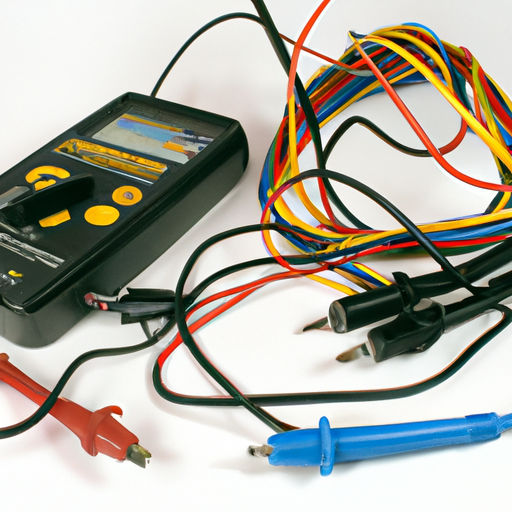
The production process of electrical testers and current probes is a complex and intricate process that involves several stages. These stages include design, prototyping, testing, manufacturing, and quality control. In this article, we will explore each of these stages in detail to gain a better understanding of the mainstream equipment - electrical testers, current probes production process.Design StageThe design stage is the first stage in the production process of electrical testers and current probes. In this stage, the design team creates a blueprint of the product, which includes the specifications, features, and functionality of the product. The design team also considers the materials that will be used in the production process, as well as the cost of production.The design team uses computer-aided design (CAD) software to create a 3D model of the product. This model is then used to create a prototype of the product.Prototyping StageThe prototyping stage is the second stage in the production process of electrical testers and current probes. In this stage, the design team creates a physical prototype of the product. The prototype is used to test the functionality and features of the product.The prototype is created using a variety of materials, including plastic, metal, and electronic components. The prototype is then tested to ensure that it meets the specifications and requirements of the product.Testing StageThe testing stage is the third stage in the production process of electrical testers and current probes. In this stage, the prototype is tested to ensure that it meets the specifications and requirements of the product.The testing process includes a variety of tests, including functionality tests, durability tests, and safety tests. The testing process is designed to identify any defects or issues with the product before it is manufactured.Manufacturing StageThe manufacturing stage is the fourth stage in the production process of electrical testers and current probes. In this stage, the product is manufactured using the materials and specifications identified in the design stage.The manufacturing process includes several steps, including assembly, wiring, and testing. The product is assembled using a variety of tools and equipment, including soldering irons, wire cutters, and pliers.Quality Control StageThe quality control stage is the final stage in the production process of electrical testers and current probes. In this stage, the product is tested to ensure that it meets the specifications and requirements of the product.The quality control process includes a variety of tests, including functionality tests, durability tests, and safety tests. The product is also inspected to ensure that it meets the quality standards of the company.ConclusionIn conclusion, the production process of electrical testers and current probes is a complex and intricate process that involves several stages. These stages include design, prototyping, testing, manufacturing, and quality control. Each stage is critical to the success of the product, and any issues or defects identified in one stage can impact the entire production process. By following a rigorous production process, companies can ensure that their products meet the specifications and requirements of their customers, and are of the highest quality.
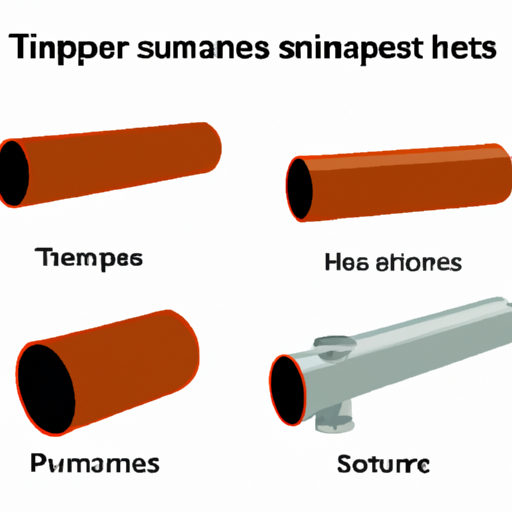
Thermal management is a critical aspect of modern electronic devices. With the increasing demand for high-performance devices, the need for efficient cooling solutions has become more important than ever. Heat pipes and vapor chambers are two of the most popular thermal management solutions used in electronic devices. In this article, we will discuss the components and modules of thermal - heat pipes and vapor chambers.Heat PipesHeat pipes are passive heat transfer devices that use the principles of phase change to transfer heat from one point to another. They consist of a sealed tube filled with a working fluid, typically water or a refrigerant. The tube is evacuated to create a vacuum, and the working fluid is added to the tube. The heat pipe is then sealed, and the working fluid is heated at one end of the tube. As the fluid heats up, it evaporates and turns into a vapor. The vapor then travels to the cooler end of the tube, where it condenses back into a liquid. The liquid then flows back to the hot end of the tube, where the process starts again.The components of a heat pipe include the evaporator, the condenser, and the wick. The evaporator is the part of the heat pipe that is in contact with the heat source. It is designed to absorb heat and convert the working fluid into a vapor. The condenser is the part of the heat pipe that is in contact with the cooling medium. It is designed to condense the vapor back into a liquid and release the heat. The wick is a capillary structure that lines the inside of the heat pipe. It is designed to transport the liquid back to the evaporator.Heat pipes are used in a wide range of applications, including electronics cooling, aerospace, and HVAC systems. They are highly efficient and can transfer heat over long distances with minimal energy input. They are also lightweight and require no external power source, making them ideal for use in remote or hard-to-reach locations.Vapor ChambersVapor chambers are similar to heat pipes in that they use the principles of phase change to transfer heat. However, they are larger and more complex than heat pipes and are designed to handle higher heat loads. Vapor chambers consist of a flat, sealed container filled with a working fluid. The container is lined with a wick that is designed to transport the liquid to the evaporator.The components of a vapor chamber include the evaporator, the condenser, and the wick. The evaporator is the part of the vapor chamber that is in contact with the heat source. It is designed to absorb heat and convert the working fluid into a vapor. The condenser is the part of the vapor chamber that is in contact with the cooling medium. It is designed to condense the vapor back into a liquid and release the heat. The wick is a capillary structure that lines the inside of the vapor chamber. It is designed to transport the liquid back to the evaporator.Vapor chambers are used in a wide range of applications, including high-performance computing, LED lighting, and medical equipment. They are highly efficient and can handle high heat loads with minimal energy input. They are also lightweight and can be customized to fit a wide range of shapes and sizes.ConclusionHeat pipes and vapor chambers are two of the most popular thermal management solutions used in electronic devices. They both use the principles of phase change to transfer heat from one point to another. Heat pipes are passive heat transfer devices that are lightweight and require no external power source. Vapor chambers are larger and more complex than heat pipes and are designed to handle higher heat loads. Both heat pipes and vapor chambers consist of an evaporator, a condenser, and a wick. The wick is a capillary structure that lines the inside of the device and is designed to transport the liquid back to the evaporator. Overall, heat pipes and vapor chambers are highly efficient and effective thermal management solutions that are used in a wide range of applications.